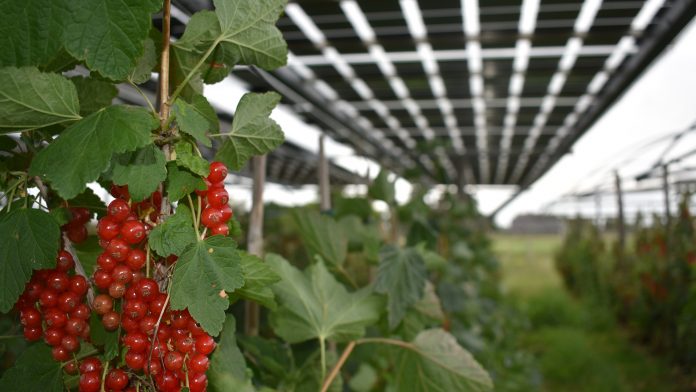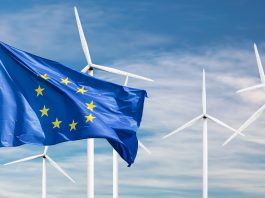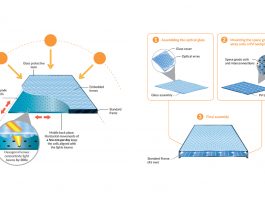Dries Acke, Policy Director at SolarPower Europe, discusses the potential of solar power as a solution to the devastating European drought.
We must turn to solar power to resolve the devastating droughts facing the planet. In the United Nations 2023 Water Development Report, co-published with UNESCO, António Guterres, Secretary-General of the United Nations, began his foreword by stating: “Water is the lifeblood of humanity. It is vital for survival itself and supports the health, resilience, development, and prosperity of people and planet alike. But humanity is blindly travelling a dangerous path. Vampiric overconsumption and overdevelopment, unsustainable water use, pollution and unchecked global warming are draining humanity’s lifeblood, drop by drop.”
Undoubtedly, the picture the Secretary-General paints is grim. We can no longer ignore the effects of climate change and the imminent water crisis. Heatwaves, droughts, floods, storms – we are currently stuck in a vicious cycle where our water supplies are at risk because of climate change and overconsumption.
Richard Connor, the report’s lead author, has stated that 3.5 billion people, or 10% of the global population, “currently live in areas of high or critical water stress.”
The EU Joint Research Centre’s (JRC) latest report on droughts in Europe predicts that summer 2023 will be even drier than last year. The situation in Spain, northern Italy, and France particularly raises “concerns for water supply for human use, agriculture, and energy production.”
Extreme drought conditions are already being seen in regions in Southern Spain, as Spain’s significant reservoir capacity is at record low levels, and canals are running dry. With the country’s water reserves 50% below capacity, and drought affecting 80% of the Spanish countryside, Spain is facing a national emergency.
How can we tackle this problem?
By finding new models of using, reusing, and conserving water; this is where Agrisolar and floating solar power comes in.
Agrisolar is a rapidly expanding sector with incredible potential. It effectively brings together two major sectors of our society and economy: agriculture and energy. Land is used for both agricultural production, and for photovoltaic (PV) power generation. With agriculture being particularly vulnerable to climate change, solar technologies can be seamlessly integrated into nature-positive solar sites, including dual land-use project types like onshore floating PV and Agri-PV.
Agrisolar offers a critical solution to minimising water needs, reducing greenhouse gas emissions, regenerating land, deploying additional solar capacity and, overall, promoting more sustainable agricultural practices. In turn, we can avoid overconsuming water.
Let’s look at Akuo’s Agri-PV Bellegrade apricot orchard located in the Occitania Region in France. A 2 MW solar power system is combining solar PV power generation with organic apricot farming and beekeeping. The solar panels over the apricot trees generate an increasingly valuable commodity: shade. The value is immediately seen in water use. A staggering 70% of the water is saved compared to a classic apricot farm.
The potential for Agrisolar in the European Union (EU) is immense. If solar were deployed on only 1% of Europe’s arable land, its technical capacity would amount to over 900 GW. This is more than six times the current installed PV capacity in the EU. Agrisolar strengthens the EU’s resilience to climate change, and other shocks and stresses, including ongoing water shortages. Ultimately, Agrisolar solutions are effective climate mitigation tools which we need to deploy.
Other Agrisolar projects contribute to regenerating degraded land, making it into agricultural land. The RES Group’s regeneration project in Haute-Garonne, France, is a prime example of this. Crops which previously had a poor agricultural performance are now flourishing as a part of a poultry farm. This is important when we think of the damage that can be done by a drought’s most paradoxical consequence: a flood. Droughts damage soil’s ability to properly absorb and release water. When the rains do come, this means flash flooding. Agrisolar projects like the one in Haute-Garonne can act as key tools to rehabilitate damaged soils. We share more examples in our Agrisolar: Best Practices Guideline, Vol. 1.
Floating solar power offers further relief. Applied directly on the surface of artificial water bodies, like reservoirs, floating solar is taking off across Europe. EDP, the main Portuguese utility company, has built the largest floating solar park in Europe on the Alqueva Reservoir. It consists of 12,000 solar panels, and is the length of four football pitches. These solar panels are directly preventing excessive water evaporation. One 2021 study analysing floating panels on water reservoirs, found that evaporation was reduced by 42%. In a win-win situation, floating panels can be up to 10-15% more efficient because of water cooling.
Beyond water quantity, there is evidence that floating solar power is having a positive impact on water quality – which supports the entire water cycle. There are even examples of solar PV which can be used as a reef for endemic species in order to develop. BayWa r.e.’s Bomhofsplas Floating PV park near Zwolle, in the Netherlands, has installed 20 ‘biohuts’ at the edges of the floating plant, acting as nurseries for small fish and aquatic microorganisms. Early studies already show an increase in the number and diversity of species in the area below the floating PV plant.
What’s next?
Policymakers will play a vital role in developing the frameworks that drive the uptake of protective, dual-land use solar power. We need faster Agrisolar deployment now. That means speeding up the permitting process, removing all regulatory and administrative barriers, and improving regulatory frameworks.
Right now, one of the main challenges for the development of Agrisolar systems across Europe is the low quality, or absence of, regulatory frameworks to support the development of Agrisolar projects. Many countries that have significant potential to develop Agrisolar, including Spain, Portugal, and Italy, currently lack a suitable framework. France is one exemption, where the Tender Documentation Energy Regulation Commission provides a clear definition of Agrisolar systems. In general, tendering frameworks for Agrisolar projects do not provide the right incentives, and are not as competitive as traditional ground-mounted solar systems. Consequently, this results in lower interest from potential investors, and a lower provision of state aid to foster the development of Agrisolar systems.
Enabling frameworks should provide accelerated permitting procedures for projects that develop a high-quality and certified Sustainable Agricultural Concept. Here, a clearer Agrisolar definition at the EU level is also needed.
For larger Agrisolar projects, we need targeted, competitive tendering schemes.
In addition, farmers who develop Agri-PV projects on their land should not lose their Common Agricultural Policy subsidies. In Germany, farmers saw their direct income support removed after they deployed an Agri-PV system designed to allow sheep to graze on site. This decision was later revoked by the courts as a violation of EU law.
We also need specific financial and technical support, in the form of grants and feed-in tariffs for farmers and communities who develop smaller solar power projects.
Finally, we have to fully realise the potential of the Agrisolar sector. Public and private R&D funding must be channelled to advance our understanding of crops, PV system designs, and business models to fully maximise the environmental benefits of this technology.
Currently, we are on a dangerous collision course with climate change. If we do not course correct now, we will simply compound the severity of water shortages. Through innovative solar solutions, like Agrisolar, floating solar power, and Agri-PV projects, we have the opportunity to reduce the energy sectors’ emissions, while protecting water resources.
It’s an obvious win-win for our people, planet, and prosperity. With temperatures rising and forecasts becoming increasingly severe, we have no time to waste.
Please note, this article will also appear in the fourteenth edition of our quarterly publication.









